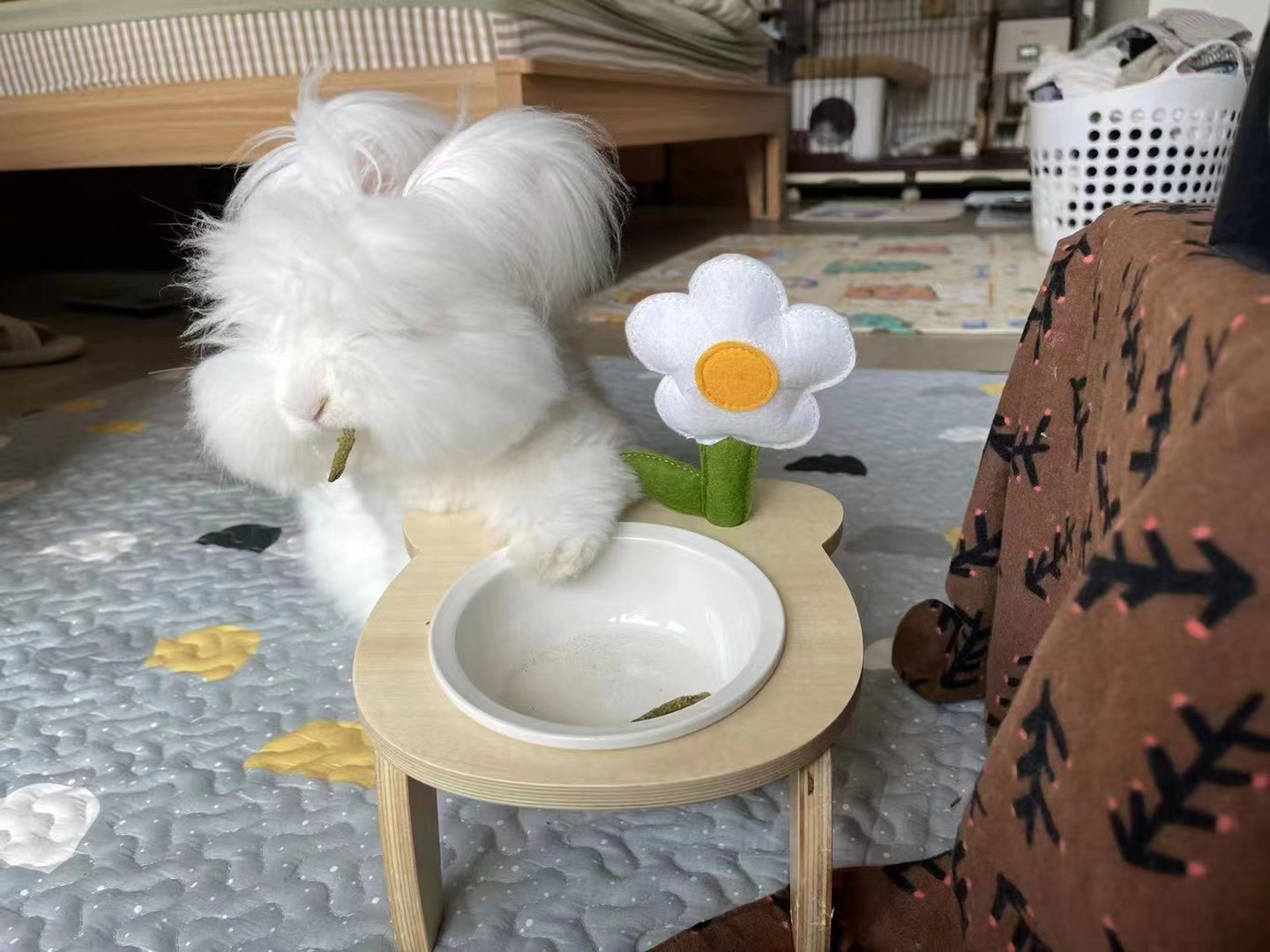


長毛兔養殖技巧全解析
 發布日期:2025-01-27
來源:http://www.m6i42s8.cn 發布人:創始人
發布日期:2025-01-27
來源:http://www.m6i42s8.cn 發布人:創始人
對于想要在長毛兔養殖領域獲得益的養殖戶來說,僅僅掌握基礎養殖知識是不夠的,還需要深入了解一些實用的養殖技巧。
For farmers who want to achieve high efficiency in the field of long haired rabbit farming, simply mastering basic farming knowledge is not enough, and they also need to have a deep understanding of some practical farming techniques.
在飼料管理方面,要注重飼料的營養均衡和品質。除了常見的青飼料和精飼料搭配,還可以在飼料中添加一些礦物質和維生素添加劑,如骨粉、食鹽、維生素 A、維生素 D 等,以滿足長毛兔生長和產毛的營養需求。同時,要注意飼料的儲存,避免飼料發霉變質,防止長毛兔因食用變質飼料而生病。
In terms of feed management, attention should be paid to the nutritional balance and quality of feed. In addition to the common combination of green and refined feed, mineral and vitamin additives such as bone meal, salt, vitamin A, vitamin D, etc. can also be added to the feed to meet the nutritional needs of long haired rabbits for growth and hair production. At the same time, attention should be paid to the storage of feed to avoid mold and spoilage, and to prevent long haired rabbits from getting sick due to consuming spoiled feed.
在采毛環節,掌握正確的方法能提高兔毛的質量和產量。采毛方法主要有剪毛和拔毛兩種。剪毛適合在夏季進行,操作時要使用鋒利的剪刀,貼近皮膚小心剪毛,避免剪傷兔子。拔毛則適合在冬季或春秋季,選擇長毛兔的長毛部分,一小撮一小撮地輕輕拔取,這樣能刺激毛囊生長,提高兔毛產量。但拔毛時要注意不要過度,以免損傷兔子皮膚。

Mastering the correct methods during the hair harvesting process can improve the quality and yield of rabbit hair. There are two main methods for hair harvesting: shearing and plucking. Trimming is suitable for summer, and sharp scissors should be used during the operation. Be careful to cut the hair close to the skin to avoid injuring the rabbit. Pulling out hair is suitable for winter or spring and autumn seasons. Choose the long hair part of the long haired rabbit and gently pull out a small handful, which can stimulate hair follicle growth and increase rabbit hair production. But when pulling out the fur, be careful not to overdo it to avoid damaging the rabbit's skin.
疾病防治是養殖的關鍵。除了常規的疫苗接種和衛生措施,還可以通過加強長毛兔的免疫力來預防疾病。例如,在飼料中添加一些具有免疫增強作用的中草藥,如黃芪、板藍根等。同時,要注意觀察兔子的行為和生理特征,做到疾病早發現、早。
Disease prevention and control are key to efficient aquaculture. In addition to routine vaccination and hygiene disinfection measures, diseases can also be prevented by strengthening the immune system of long haired rabbits. For example, adding some Chinese herbs with immune enhancing effects, such as Huangqi and Banlangen, to feed. At the same time, attention should be paid to observing the behavior and physiological characteristics of rabbits to achieve early detection and treatment of diseases.
合理的養殖密度也能提高養殖效率。養殖密度過大,會導致兔舍環境變差,容易引發疾病傳播;密度過小,則會浪費養殖空間和資源。一般來說,每養殖 3 - 5 只成年長毛兔較為合適。
Reasonable breeding density can also improve breeding efficiency. Excessive breeding density can lead to a deterioration of the rabbit house environment, which can easily cause disease transmission; If the density is too low, it will waste breeding space and resources. Generally speaking, it is more suitable to breed 3-5 adult long haired rabbits per square meter.
要做好養殖記錄。記錄長毛兔的生長情況、飼料消耗、疾病發生和等信息,通過分析這些數據,可以及時調整養殖策略,提高養殖效益。
Keep good records of breeding. Record the growth status, feed consumption, disease occurrence, and treatment information of long haired rabbits. By analyzing these data, timely adjustments to breeding strategies can be made to improve breeding efficiency.
長毛兔養殖需要從飼料、采毛、疾病防治、養殖密度和養殖記錄等多個方面入手,綜合運用各種技巧,才能實現長毛兔養殖的高產、和。
Efficient breeding of long haired rabbits requires starting from multiple aspects such as feed, wool collection, disease prevention and control, breeding density, and breeding records, and comprehensively applying various techniques to achieve high yield, high quality, and high efficiency in the breeding of long haired rabbits.